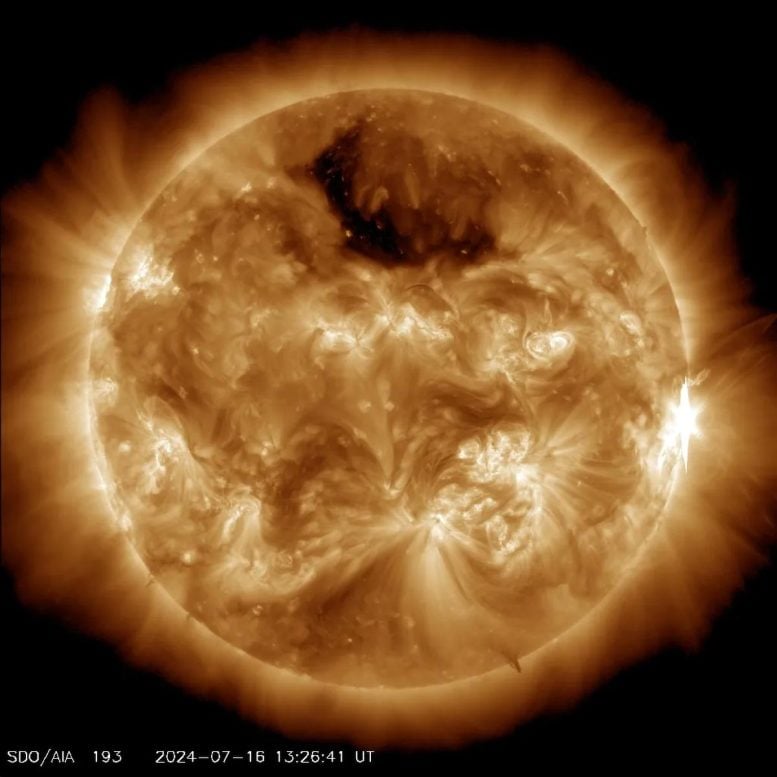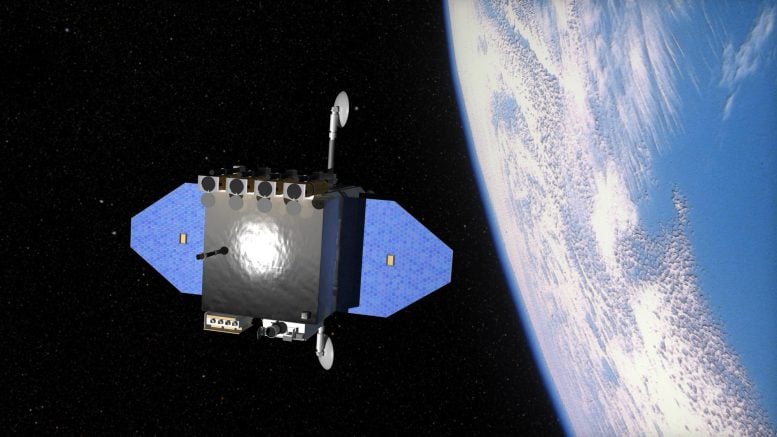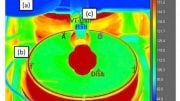
NASA’s Solar Dynamics Observatory captured this image of a solar flare — seen as the bright flash on the right — on July 16, 2024. The image shows a subset of extreme ultraviolet light that highlights the extremely hot material in flares and which is colorized in gold. Credit: NASA/SDO
On July 16, 2024, at 9:26 A.M. ET, a significant solar flare was observed by NASA’s Solar Dynamics Observatory, peaking at 9:26 A.M. ET. Classified as an X1.9, indicating high intensity, these solar flares can disrupt radio communications, navigation signals, and electrical grids, and pose risks to astronauts and spacecraft.
Solar flares are intense bursts of radiation emanating from the release of magnetic energy associated with sunspots. They are one of the solar system’s most powerful forms of radiation, though largely invisible to the naked eye except at ultraviolet wavelengths. These flares occur when the sun’s magnetic fields, which have been twisted and stretched over time, suddenly snap and realign, releasing energy as heat and light. This process can accelerate solar particles to near light speed, resulting in a flare.
The intensity of solar flares is categorized by a classification system that uses letters (A, B, C, M, and X), with A being the smallest and X the largest. Within each letter category, there is a finer scale from 1 to 9 that further helps in quantifying the flare’s strength. For instance, an X1 flare is the lowest in the X category but is still a significant event, while an X9 would be among the most powerful flares observed. These classifications are crucial for assessing potential impacts on Earth, including disruptions to communication and navigation systems, power grids, and even posing risks to astronauts and satellites in space.
NASA’s Solar Dynamics Observatory (SDO) is a critical mission focused on understanding the Sun’s influence on Earth and near-Earth space by studying the solar atmosphere in many wavelengths simultaneously. Launched in February 2010, SDO is part of NASA’s Living With a Star (LWS) program. The observatory is equipped with a suite of instruments that provide observations leading to a deeper understanding of the solar dynamics and their effects on the terrestrial environment. These instruments measure the solar atmosphere’s magnetic field, photograph the solar surface, and detect solar ultraviolet output, which significantly contributes to our knowledge about solar variations that influence Earth.
The SDO helps scientists gain insights into the Sun’s interior structure, magnetic activity, and the dynamic forces that create space weather. With its high-resolution cameras and constant observation, SDO provides unparalleled data with a detail and scope unmatched by prior missions. This continuous monitoring is crucial for improving the ability to forecast space weather events that can affect satellite operations, astronaut safety, and Earth-based technologies and infrastructures.










Be the first to comment on "The Sun Erupts: A Potent X1.9 Solar Flare Unleashed"